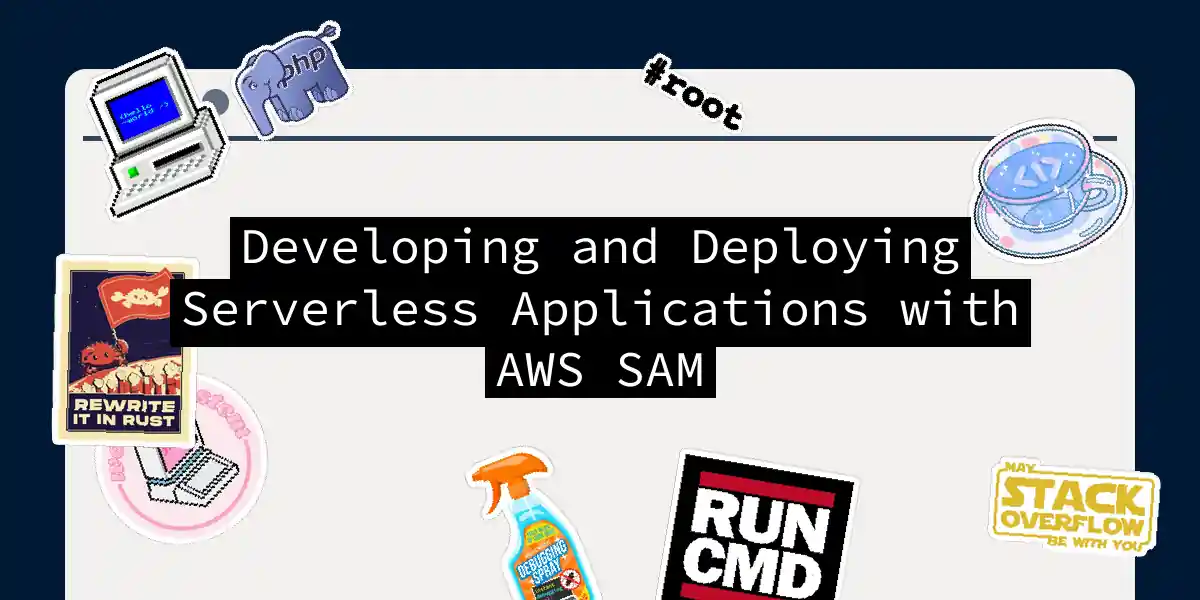Introduction to AWS SAM
In the ever-evolving landscape of software development, serverless architecture has become a game-changer, allowing developers to focus on writing code without worrying about the underlying infrastructure. One of the most powerful tools in this domain is the AWS Serverless Application Model (AWS SAM). In this article, we’ll delve into the world of AWS SAM, exploring how it simplifies the development and deployment of serverless applications.
What is AWS SAM?
AWS SAM is an open-source framework designed to make building serverless applications a breeze. It leverages infrastructure as code (IaC) principles, allowing you to define your application infrastructure using a simple and clean syntax. SAM is built on top of AWS CloudFormation, which means you can use all the resources and features available in CloudFormation, but with the added convenience of SAM’s shorthand syntax.
Key Features of AWS SAM
Simplified Infrastructure Definition
With AWS SAM, you can define your serverless application infrastructure using just a few lines of code. Here’s an example of a SAM template that sets up a Lambda function, an API Gateway, and a DynamoDB table:
AWSTemplateFormatVersion: '2010-09-09'
Transform: 'AWS::Serverless-2016-10-31'
Resources:
GetProductsFunction:
Type: 'AWS::Serverless::Function'
Properties:
FunctionName: !Sub 'get-products-${AWS::Region}'
Runtime: nodejs14.x
Handler: index.handler
CodeUri: get-products/
Events:
ApiEvent:
Type: 'Api'
Properties:
Path: '/products'
Method: 'get'
ProductsTable:
Type: 'AWS::DynamoDB::Table'
Properties:
TableName: !Sub 'products-${AWS::Region}'
AttributeDefinitions:
- AttributeName: id
AttributeType: S
KeySchema:
- AttributeName: id
KeyType: HASH
BillingMode: PAY_PER_REQUEST
This template is a powerful example of how SAM simplifies the definition of complex serverless architectures.
Local Testing and Debugging
One of the standout features of AWS SAM is its ability to facilitate local testing and debugging. The SAM CLI provides a Lambda-like execution environment on your local machine, allowing you to test and debug your serverless applications before deploying them to the cloud. Here’s how you can use the sam local command to invoke a Lambda function locally:
sam local invoke GetProductsFunction --event events/event.json
This command simulates the invocation of your Lambda function with a sample event, helping you catch issues early in the development cycle.
Continuous Deployment and Syncing
AWS SAM also supports continuous deployment and syncing of your local changes to the cloud. The sam sync command watches for local changes and deploys them to the AWS Cloud in real-time, significantly speeding up your development and testing workflows.
sam sync --watch --stack-name my-serverless-app
This command ensures that any changes you make locally are immediately reflected in your cloud environment.
Step-by-Step Guide to Using AWS SAM
Installing AWS SAM CLI
Before you can start using AWS SAM, you need to install the SAM CLI. Here are the steps to install it:
pip install aws-sam-cli
Alternatively, you can download and run the installer for Windows or use the pre-installed version on Amazon Linux AMI.
Initializing a SAM Project
To start a new SAM project, you can use the sam init command. This command initializes a ready-to-deploy SAM application with sample code, unit tests, and the SAM template.
sam init --runtime nodejs14.x --name my-serverless-app
This will set up a basic project structure for you to build upon.
Building Your Application
Once you have your project set up, you can build your application using the sam build command. This command creates build artifacts from your application code and dependencies.
sam build
The build artifacts are then used for local testing and deployment to the AWS Cloud.
Deploying Your Application
To deploy your application, use the sam deploy command. This command deploys your build artifacts to the AWS Cloud.
sam deploy --guided
The --guided option will prompt you for the necessary deployment parameters if you haven’t configured them already.
Diagram: SAM Development and Deployment Workflow
Here’s a flowchart illustrating the workflow of developing and deploying a serverless application using AWS SAM:
Real-World Use Cases
AWS SAM is not just a tool for small-scale projects; it is widely used by both startups and large enterprises to modernize their businesses. Here are a few use cases:
- Building Serverless APIs: Use SAM to define API Gateways and Lambda functions that power your RESTful APIs.
- Real-Time Data Processing: Set up serverless state machines and Lambda functions to process real-time data streams.
- CI/CD Pipelines: Integrate SAM with CI/CD systems like AWS CodePipeline to automate the deployment of your serverless applications.
Conclusion
AWS SAM is a powerful tool that simplifies the development and deployment of serverless applications. With its ability to define infrastructure as code, facilitate local testing and debugging, and support continuous deployment, SAM makes the entire development lifecycle more efficient and enjoyable. Whether you’re a seasoned developer or just starting out with serverless architecture, AWS SAM is definitely worth exploring.
So, the next time you’re thinking about building a serverless application, remember: with AWS SAM, you can go from idea to production faster than you can say “serverless magic.” Happy coding
